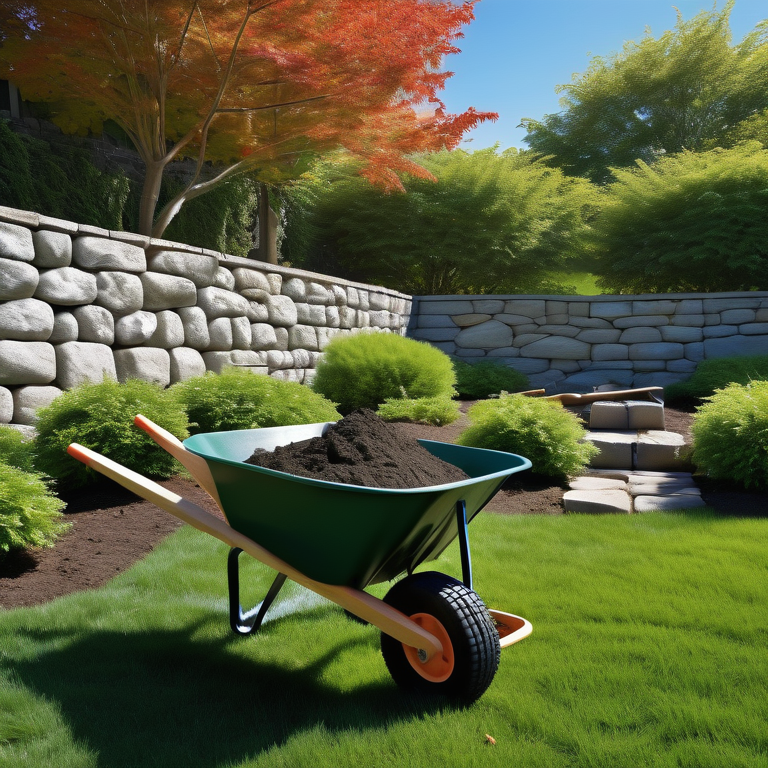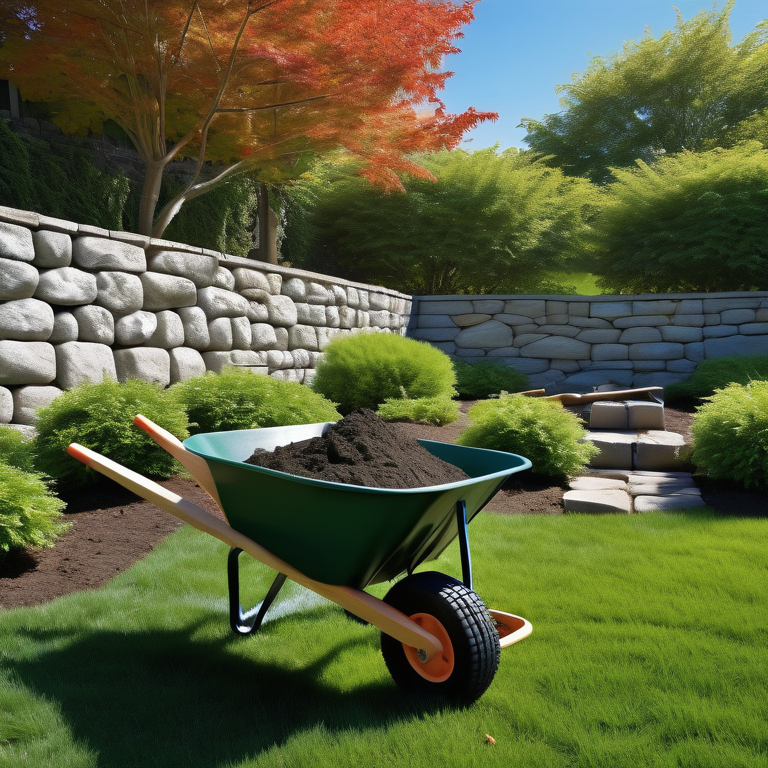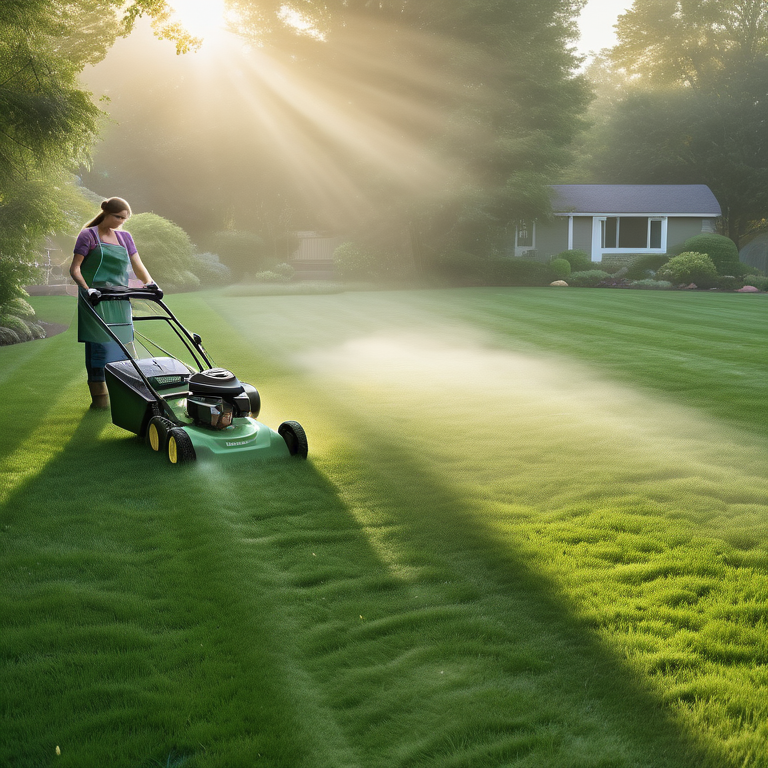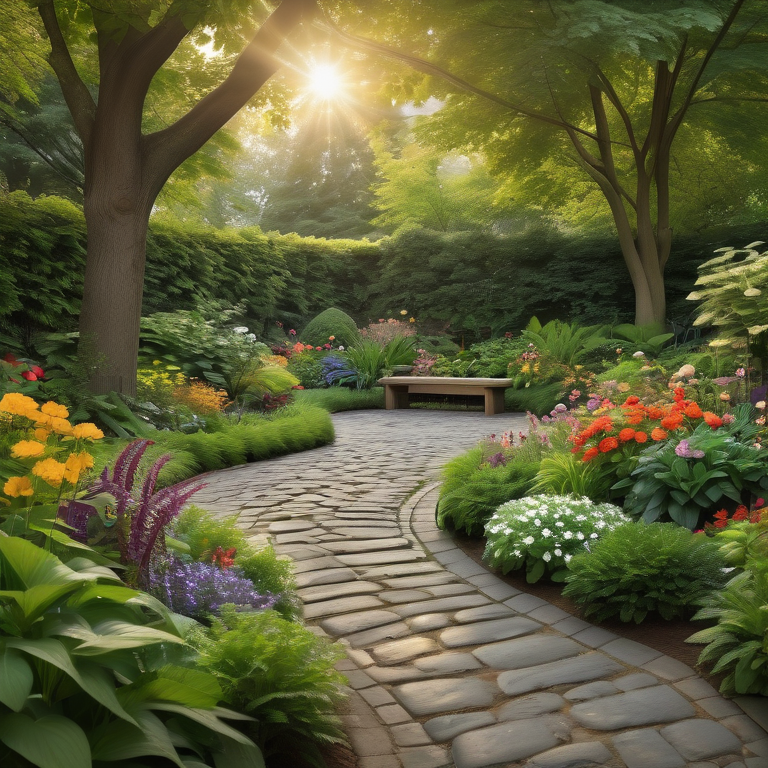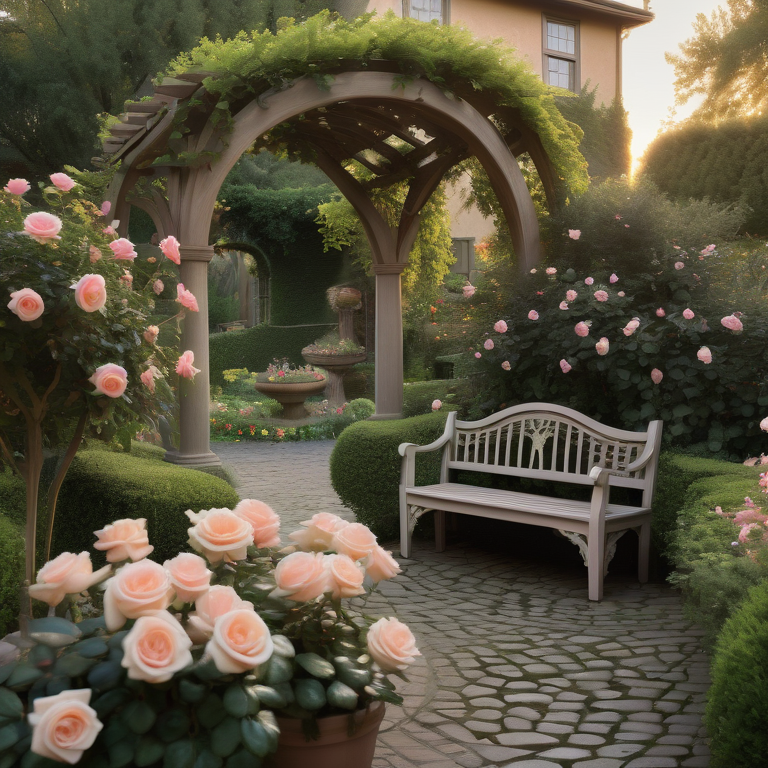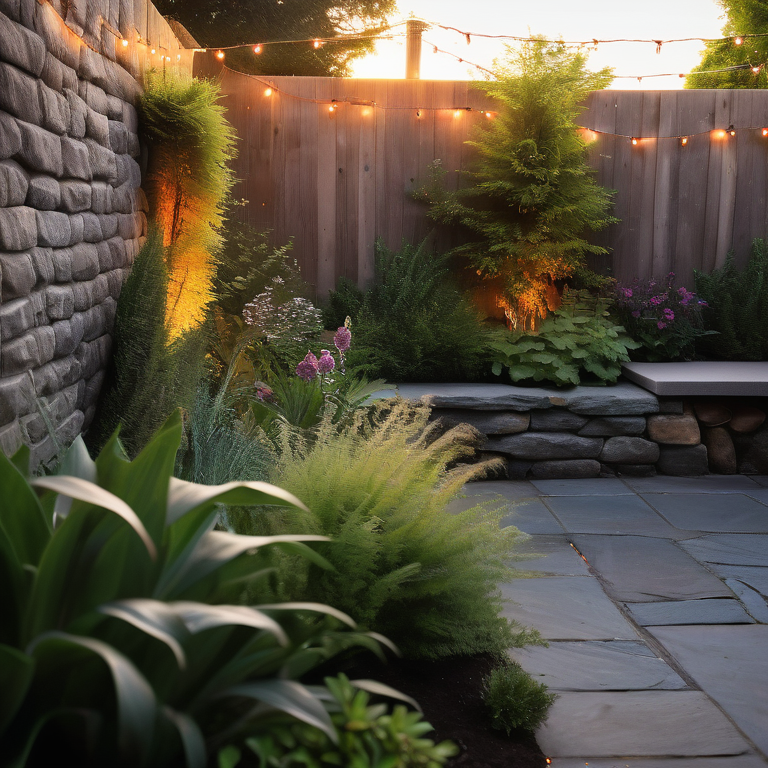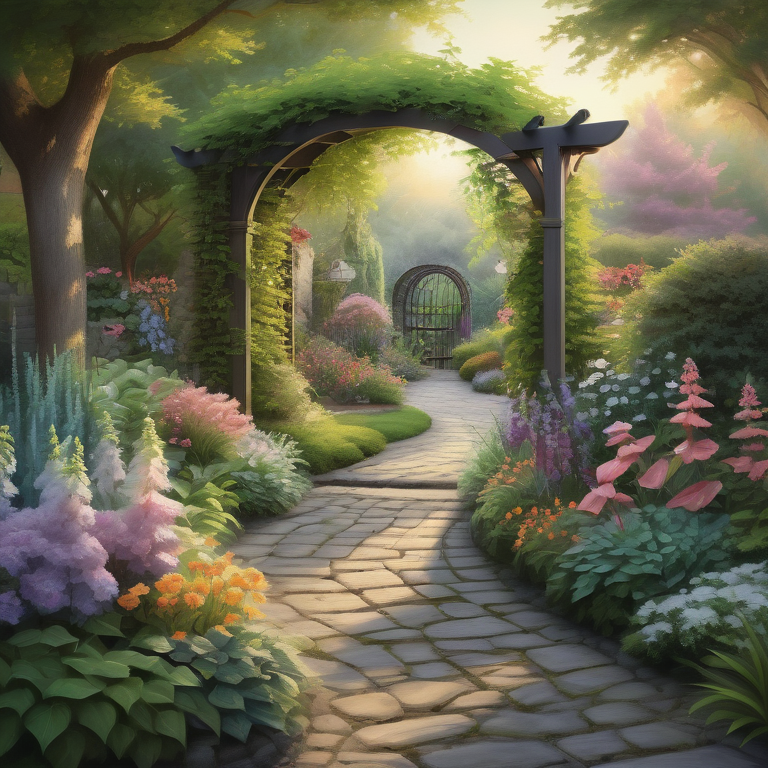Key Highlights
- Landscaping in construction involves designing, constructing, and maintaining outdoor spaces enhance their aesthetic appeal and functionality.
- It includes both softscape and hardscape elements, such as plants, trees, retaining walls, and outdoor structures.
- Landscaping increase the value of a property by up to 20% and create a comfortable and inviting outdoor living space.
- Landscape architects play a crucial role in the design and planning process of landscaping projects.
- Regular maintenance is essential for preserving the beauty and health of a landscape post-construction.
Introduction
Landscaping is an essential aspect of construction that goes beyond planting shrubs and mowing lawns. It involves the design, construction, and maintenance of outdoor spaces to enhance their aesthetic appeal and functionality. Landscaping can transform an ordinary outdoor space into a beautiful and inviting area that reflects the owner’s preferences and complements the surrounding environment.
In this blog, we will explore the concept of landscaping in construction, its key elements, the role it plays in enhancing construction projects, the landscape construction process, and the benefits and challenges associated with it. Whether you are a homeowner looking to improve your property’s curb appeal or a construction professional seeking to integrate landscaping into your projects, this blog will provide valuable insights into the essentials of landscaping in construction.
Understanding Landscaping in Construction
Landscaping in construction refers to the design, construction, and maintenance of outdoor spaces to enhance their visual appeal and functionality. It involves the careful selection and arrangement of various elements, including plants, trees, hardscape features, and water elements, to create a cohesive and aesthetically pleasing outdoor environment. The goal of landscaping in construction is to create outdoor spaces that complement the building’s architecture and provide a comfortable and inviting area for residents or visitors. Whether it’s a residential property, commercial building, or public space, landscaping plays a crucial role in enhancing the overall beauty and functionality of the outdoor space.
Defining Landscaping in the Context of Construction
In the context of construction, landscaping refers to the process of designing, constructing, and maintaining outdoor spaces to enhance their aesthetic appeal and functionality. A landscape architect is typically involved in the planning and design stages of a construction project, working closely with the construction team to ensure that the outdoor space is integrated seamlessly into the overall project. This could include the design and installation of features such as gardens, walkways, driveways, and outdoor living areas. Landscaping in construction is not limited to residential properties but also plays a crucial role in commercial and public spaces. It is an essential aspect of real estate development that adds value to the property and enhances the overall experience for residents or visitors. www.wicklowlandscaping.ie
The Role of Landscaping in Enhancing Construction Projects
Landscaping plays a significant role in enhancing construction projects by adding to the overall beauty and curb appeal of the property. A well-designed and maintained outdoor space can significantly increase the property value and attract potential buyers or tenants. Landscaping in construction involves the careful selection and arrangement of plants, trees, and hardscape features that complement the building’s architecture and create a visually appealing environment. It also includes the installation of outdoor amenities such as seating areas, water features, and lighting, which enhance the functionality and aesthetics of the outdoor space. By incorporating landscaping into construction projects, developers can create a more desirable and valuable property that stands out in the market.
Key Elements of Construction Landscaping
Construction landscaping involves the integration of various elements to create a cohesive and visually appealing outdoor space. The key elements of construction landscaping include softscape elements, such as plants, trees, and flowers, which add life and color to the landscape. Hardscape elements, such as retaining walls, pathways, and outdoor structures, provide structure and functionality to the outdoor space. Additionally, water features, such as fountains or ponds, can create a calming and tranquil atmosphere. By combining these elements, construction landscaping can transform an ordinary outdoor area into a beautiful and functional space that enhances the overall aesthetic appeal of the property. www.wicklowlandscaping.ie
Introduction to Softscape and Hardscape
Softscape and hardscape are two essential components of construction landscaping. Softscape refers to the living elements of a landscape, such as plants, trees, and shrubs. On the other hand, hardscape encompasses the non-living elements, such as pathways, retaining walls, and outdoor structures. Here are some key points about softscape and hardscape:
- Softscape maintenance involves regular upkeep of plants, including planting, pruning, and watering.
- Hardscape materials can vary, including natural stone, concrete, wood, or composite materials.
- Softscape elements provide greenery and natural beauty to the landscape.
- Hardscape elements provide structure and functionality to the outdoor space.
- Maintenance of softscape and hardscape elements may include tasks such as mowing the lawn, weeding, and cleaning.
By considering both softscape and hardscape elements in construction landscaping, you can create a harmonious and visually appealing outdoor environment that adds value to the property. www.wicklowlandscaping.ie
Incorporating Water Features and Lighting in Landscapes
Water features and lighting are two crucial elements that can enhance the beauty and functionality of a landscaped outdoor space. Water features, such as fountains, ponds, or waterfalls, create a sense of tranquility and can serve as a focal point in the landscape. Lighting, on the other hand, adds ambiance and allows for the enjoyment of outdoor spaces during the evening or nighttime. By incorporating water features and lighting into construction landscaping, you can create an inviting and captivating outdoor environment that can be enjoyed day and night. These elements can transform an ordinary outdoor space into a stunning oasis and provide a unique and enjoyable experience for residents or visitors. www.wicklowlandscaping.ie
The Process of Landscaping in Construction Projects
The landscaping process in construction projects involves several steps to ensure the successful design, construction, and maintenance of outdoor spaces. The first step is the initial planning and design phase, where landscape architects work closely with the construction team to create a landscape design that complements the building’s architecture and meets the client’s needs. This includes considering factors such as the site’s topography, soil conditions, and climate. Once the design is finalized, the next step is the execution phase, which involves the installation of landscaping elements, such as plants, trees, hardscape features, and water elements. Finally, ongoing maintenance is essential to keep the landscape healthy and thriving post-construction. www.wicklowlandscaping.ie
Planning and Design: From Concept to Blueprint
The planning and design phase is a crucial step in the landscaping process of construction projects. It involves translating the client’s vision into a comprehensive landscape design that incorporates their preferences and complements the building’s architecture. This phase typically includes the following steps:
- Initial consultation: Landscape architects meet with the client to understand their needs, preferences, and budget.
- Site analysis: The landscape architect assesses the site’s topography, soil conditions, and existing vegetation.
- Concept development: Based on the client’s requirements and site analysis, the landscape architect creates a concept design that outlines the overall layout and functionality of the outdoor space.
- Detailed design: Once the concept is approved, the landscape architect develops a detailed design, including planting plans, hardscape elements, water features, and lighting.
- Blueprint creation: The final design is translated into a blueprint that provides a visual representation of the landscape design and serves as a guide for the construction team.
- By following a comprehensive planning and design process, construction projects can ensure that the landscape design meets the client’s expectations and integrates seamlessly into the overall project.
Execution: Bringing Landscaping Designs to Life
Once the landscape design is finalized, the execution phase begins, where the landscaping designs are brought to life. This phase involves the installation of various landscaping elements, including plants, trees, hardscape features, and water elements. The execution phase may include the following steps:
- Site preparation: Clearing the area, grading the land, and preparing the soil for planting.
- Installing softscape elements: Planting trees, shrubs, flowers, and other desired plants according to the landscape design.
- Installing hardscape elements: Constructing pathways, retaining walls, outdoor structures, and other hardscape features.
- Incorporating water elements: Installing fountains, ponds, or waterfalls as per the design plan.
- Final touches: Adding finishing touches such as mulch, decorative stones, or lighting.
- Ongoing maintenance: Regular maintenance is essential to ensure the health and longevity of the landscape elements.
During the execution phase, different styles and techniques can be employed to bring the landscape design to life, such as traditional, modern, or naturalistic styles. The execution phase requires collaboration between landscape architects, construction teams, and other professionals to ensure that the landscape design is implemented accurately and efficiently. www.wicklowlandscaping.ie
Benefits of Integrating Landscaping in Construction
Integrating landscaping into construction projects offers several benefits, both in terms of aesthetics and functionality. Some of the key benefits include:
- Aesthetic appeal: Landscaping enhances the visual appeal of the property, creating a beautiful and welcoming environment.
- Environmental sustainability: Landscaping can contribute to environmental sustainability by promoting biodiversity, conserving water, and reducing energy consumption.
- Increased property value: Well-designed and maintained landscapes can significantly increase the value of a property, making it more attractive to potential buyers or tenants.
By incorporating landscaping into construction projects, developers can create a more desirable and valuable property while also contributing to the overall well-being of the environment.
Enhancing Property Aesthetic and Value
One of the significant benefits of integrating landscaping into construction projects is the enhancement of the property’s aesthetic appeal and value. A well-designed and maintained landscape can significantly improve the curb appeal of a property, making it more attractive to potential buyers or tenants. A visually appealing outdoor space creates a positive first impression and sets the tone for the overall experience of the property. Additionally, landscaping can increase the value of a property by up to 20%. Potential buyers are often willing to pay a premium for a property with a well-designed and well-maintained landscape. By integrating landscaping into construction projects, developers can maximize the value and marketability of the property, creating a lasting impression that sets it apart from the competition.
Contributing to Environmental Sustainability
In addition to enhancing aesthetic appeal and property value, landscaping in construction can also contribute to environmental sustainability. By carefully selecting and incorporating native plants into the landscape design, developers can create habitats and promote biodiversity in the surrounding environment. Native plants are adapted to the local climate and require less water and maintenance, thus reducing the need for chemical fertilizers and pesticides. Landscaping can also help conserve water by incorporating efficient irrigation systems and using drought-tolerant plants. Moreover, landscaping can reduce energy consumption by providing shade, reducing the need for artificial cooling, and improving air quality through the absorption of carbon dioxide and other pollutants. By considering the natural environment and incorporating sustainable landscaping practices, construction projects can contribute to the overall health and well-being of the environment. www.wicklowlandscaping.ie
Challenges in Construction Landscaping
Construction landscaping faces several challenges, including changing climate patterns, environmental conditions, and material selection. The changing climate can impact the success and longevity of landscaping projects, requiring careful consideration of plant selection and irrigation techniques. Environmental conditions, such as soil quality and drainage, can also pose challenges that need to be addressed during the design and construction phases. Material selection for hardscape elements must take into account durability, aesthetics, and environmental impact. Overcoming these challenges requires a comprehensive understanding of the local environment, proper planning, and the expertise of landscape architects and construction professionals. www.wicklowlandscaping.ie
Navigating Climate Considerations and Material Selection
When it comes to construction landscaping, climate considerations and material selection play a crucial role. In regions with varying climates, it is essential to select plants that are suitable for the local weather conditions, ensuring their longevity and health. Additionally, incorporating porous materials such as permeable pavers or gravel can help manage water runoff and prevent erosion. Porous materials allow water to soak into the soil, reducing the strain on drainage systems and helping maintain a healthy landscape. Material selection for hardscape elements is also important, and natural stone often offers durability and aesthetic appeal. By carefully considering climate conditions and material selection, construction landscaping projects can withstand environmental challenges and maintain their beauty and functionality for years to come. www.wicklowlandscaping.ie
Overcoming Spatial and Budgetary Constraints
Construction landscaping often faces spatial and budgetary constraints that need to be overcome during the design and execution phases. Spatial constraints may include limited outdoor space or specific site conditions that require creative solutions to maximize functionality. These constraints require careful planning and design to optimize the use of available space and create a visually appealing and functional outdoor environment. Budgetary constraints may also impact the choice of materials, plant selection, and scope of landscaping elements. By working closely with landscape architects and construction professionals, these challenges can be addressed through innovative design solutions, efficient use of resources, and prioritization of essential landscaping features. Despite these constraints, construction landscaping can still achieve the desired functionality and aesthetic appeal, adding value to the property and enhancing the overall experience for residents or visitors.
Case Studies: Successful Landscaping Projects in Construction
Examining successful landscaping projects in construction can provide valuable insights and inspiration for future endeavors. Case studies showcase the expertise and capabilities of landscaping services and landscape construction services in creating beautiful and functional outdoor spaces. By highlighting the unique challenges and innovative solutions implemented in these projects, stakeholders can gain a better understanding of the potential of construction landscaping. Case studies can encompass a range of projects, from residential landscaping transformations that focus on low-maintenance outdoor environments to commercial property landscaping innovations that prioritize functionality and aesthetics. These success stories serve as a testament to the value of integrating landscaping into construction projects. www.wicklowlandscaping.ie
Residential Landscaping Transformations
Residential landscaping transformations demonstrate the potential of construction landscaping to create low-maintenance and visually appealing outdoor environments. These case studies often showcase the collaboration between homeowners and landscaping services to design and construct outdoor spaces that meet the needs and preferences of the residents. The focus is on creating functional areas for relaxation, entertainment, and recreation while minimizing the time and effort required for landscape maintenance. By incorporating low-maintenance plants, efficient irrigation systems, and durable hardscape elements, residential landscaping transformations can provide homeowners with beautiful and sustainable outdoor spaces that enhance their quality of life and increase the value of their property.
Commercial Property Landscaping Innovations
Commercial property landscaping innovations highlight the importance of functionality and aesthetics in creating outdoor areas that complement the overall design and purpose of the property. These case studies often feature landscaping services collaborating with commercial developers to design and construct outdoor spaces that meet the specific requirements of the property, such as seating areas, walkways, and green spaces. The focus is on creating an inviting and visually appealing environment that enhances the functionality and user experience of the commercial property. Whether it’s a retail center, office building, or hospitality establishment, commercial property landscaping innovations demonstrate the potential of construction landscaping to create outdoor areas that attract visitors, promote relaxation, and contribute to the overall success of the property. www.wicklowlandscaping.ie
Conclusion
Landscaping in construction plays a crucial role in enhancing the overall appeal and value of a property. By integrating softscape, hardscape, water features, and lighting, you can transform spaces into captivating environments. Despite challenges like climate factors and budget limitations, successful landscaping projects have showcased remarkable results in both residential and commercial settings. Effective landscaping not only beautifies but also contributes to environmental sustainability. Understanding the key elements and processes involved in construction landscaping is essential for creating visually appealing and sustainable projects. Whether enhancing aesthetics or ensuring sustainability, landscaping in construction is a vital component that should not be overlooked. www.wicklowlandscaping.ie
Frequently Asked Questions
What Defines Effective Landscaping in Construction?
Effective landscaping in construction is defined by its ability to enhance the aesthetic appeal and functionality of outdoor spaces. It takes into account practical reasons such as maintenance requirements, climate considerations, and the overall management of the landscape to create a harmonious and sustainable outdoor environment.
How to Choose the Right Landscaping Elements for Your Project?
Choosing the right landscaping elements for your project involves considering factors such as the site’s conditions, climate, and desired aesthetic. Working with a landscape professional with knowledge in horticulture and weed removal can help you select the appropriate plants, trees, and hardscape features that will thrive in your specific environment.
Tips for Maintaining Your Landscape Post-Construction
To maintain your landscape post-construction, regular care is essential. This can include tasks such as aerating the soil, fertilizing plants, pruning trees, and maintaining proper irrigation. Regular upkeep will ensure the health and longevity of your landscape, keeping it beautiful and thriving.
